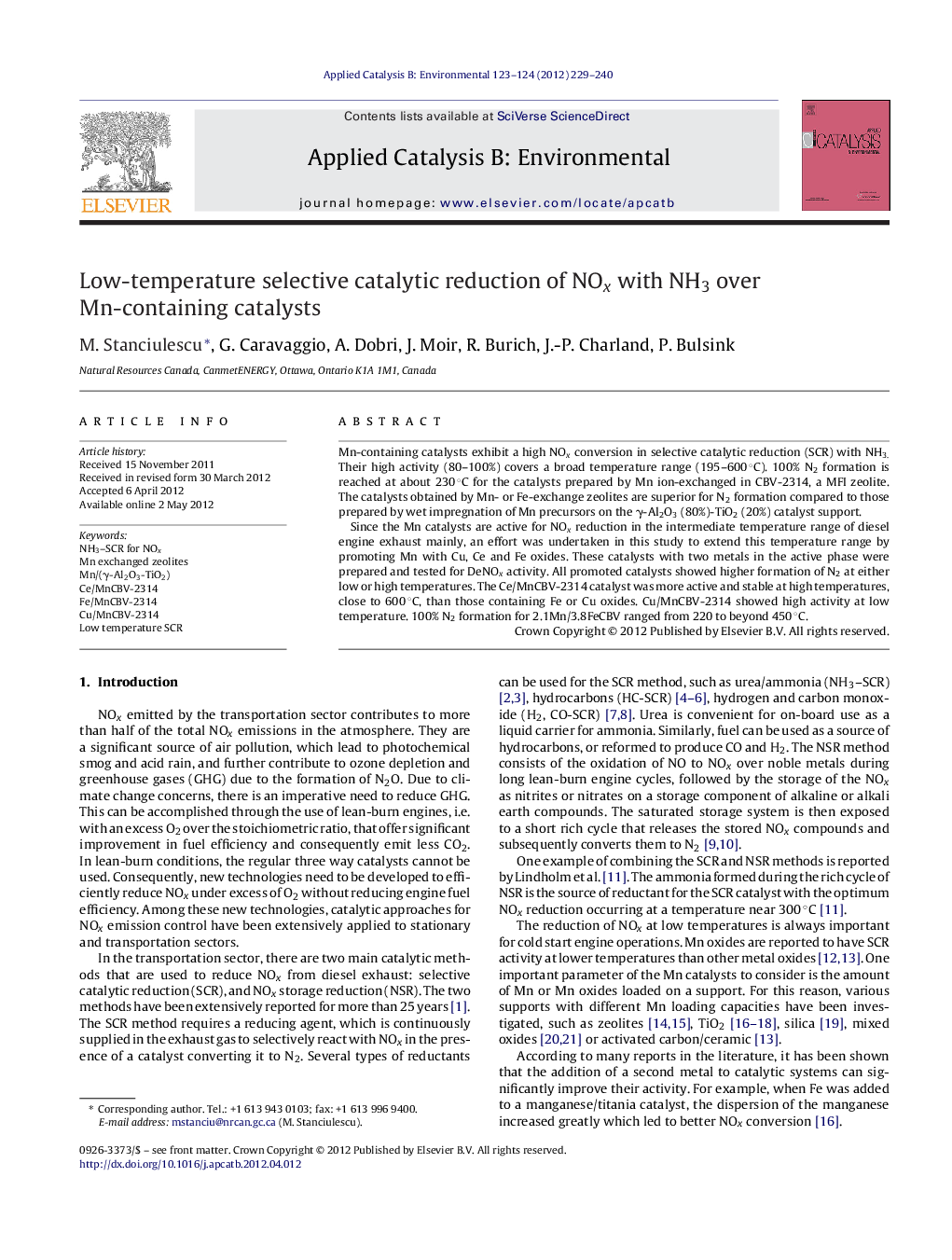| Article ID | Journal | Published Year | Pages | File Type |
|---|---|---|---|---|
| 46142 | Applied Catalysis B: Environmental | 2012 | 12 Pages |
Mn-containing catalysts exhibit a high NOx conversion in selective catalytic reduction (SCR) with NH3. Their high activity (80–100%) covers a broad temperature range (195–600 °C). 100% N2 formation is reached at about 230 °C for the catalysts prepared by Mn ion-exchanged in CBV-2314, a MFI zeolite. The catalysts obtained by Mn- or Fe-exchange zeolites are superior for N2 formation compared to those prepared by wet impregnation of Mn precursors on the γ-Al2O3 (80%)-TiO2 (20%) catalyst support.Since the Mn catalysts are active for NOx reduction in the intermediate temperature range of diesel engine exhaust mainly, an effort was undertaken in this study to extend this temperature range by promoting Mn with Cu, Ce and Fe oxides. These catalysts with two metals in the active phase were prepared and tested for DeNOx activity. All promoted catalysts showed higher formation of N2 at either low or high temperatures. The Ce/MnCBV-2314 catalyst was more active and stable at high temperatures, close to 600 °C, than those containing Fe or Cu oxides. Cu/MnCBV-2314 showed high activity at low temperature. 100% N2 formation for 2.1Mn/3.8FeCBV ranged from 220 to beyond 450 °C.
Graphical abstractFigure optionsDownload full-size imageDownload as PowerPoint slideHighlights▸ Study of Mn mono- and bimetallic catalysts active for NH3–SCR. ▸ Comparison of DeNOx activity for catalysts with various supports. ▸ Mn on Fe-exchanged zeolite is more active than Fe on Mn-exchanged zeolite. ▸ 100% NOx conversion to N2 at low and high temperatures with Mn-containing catalysts.
